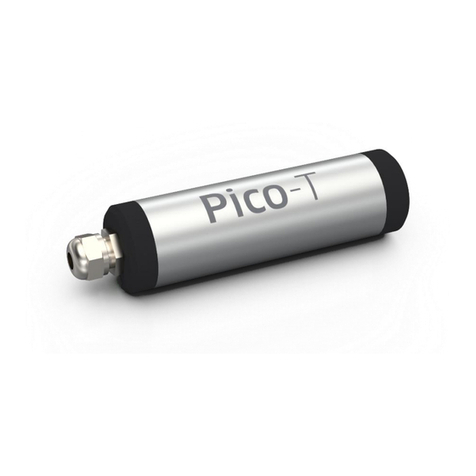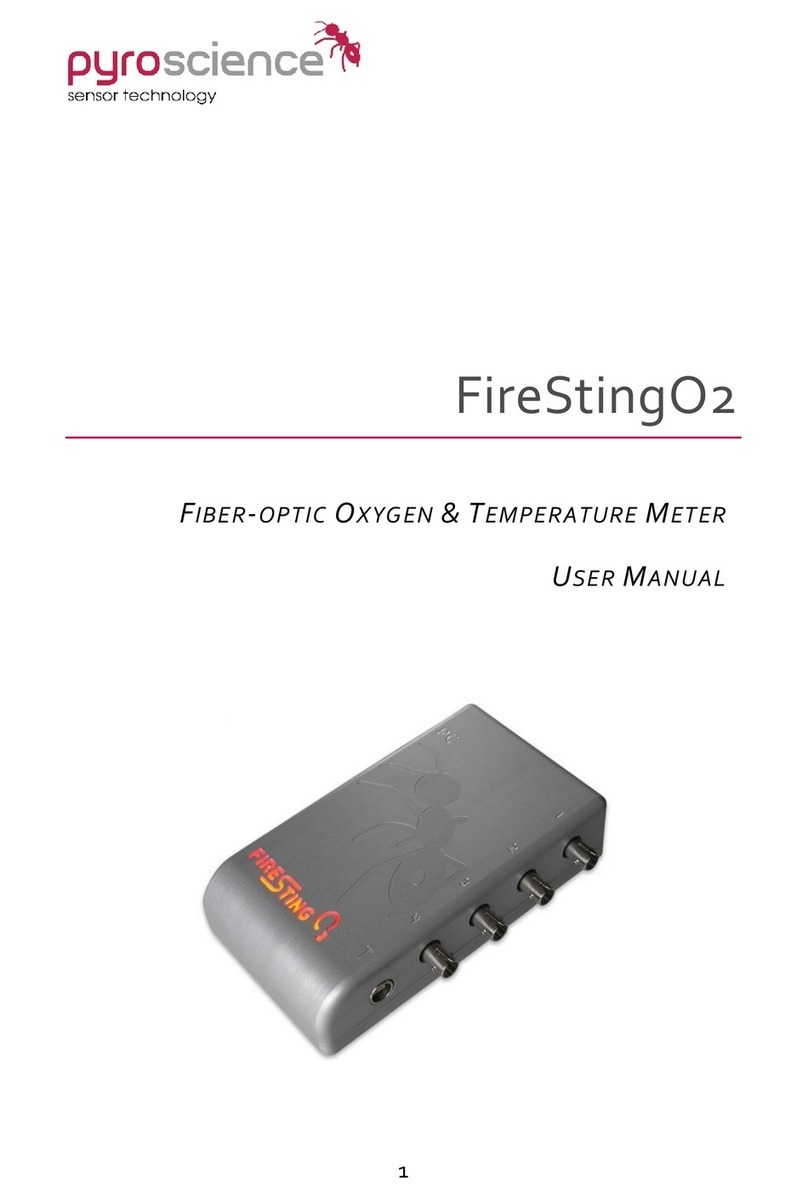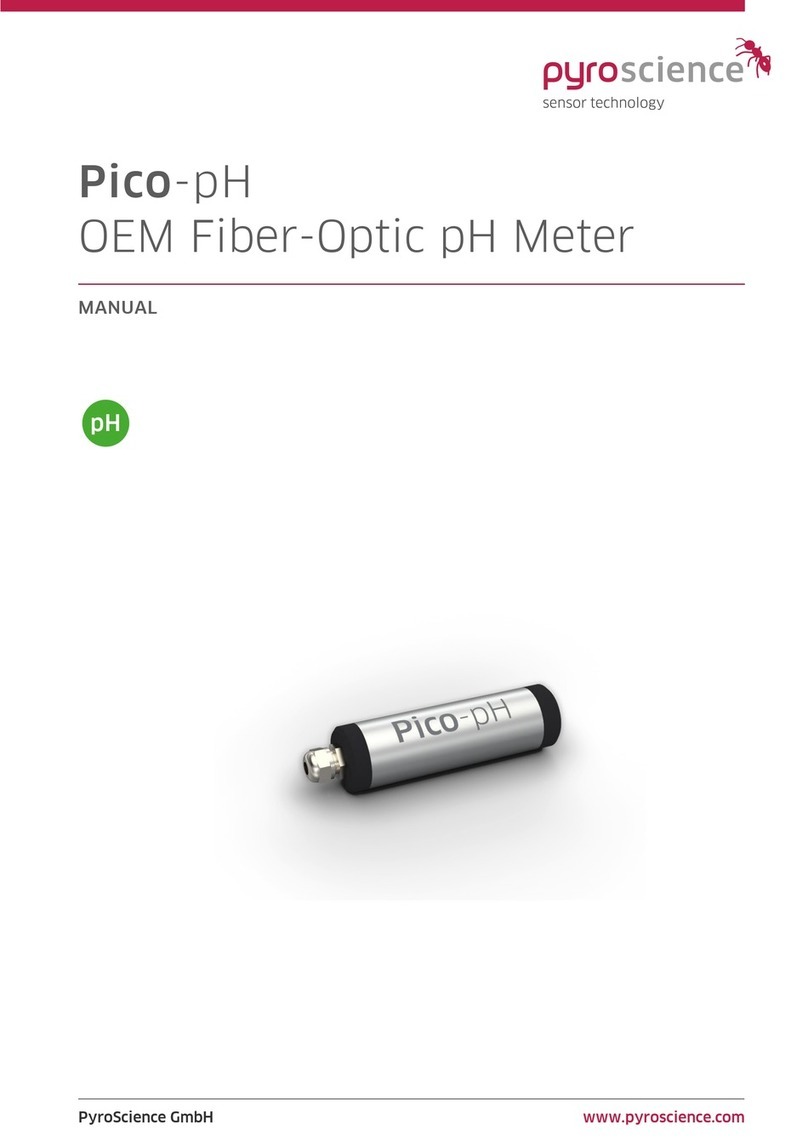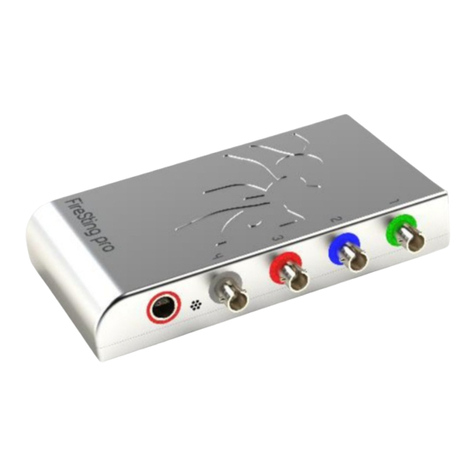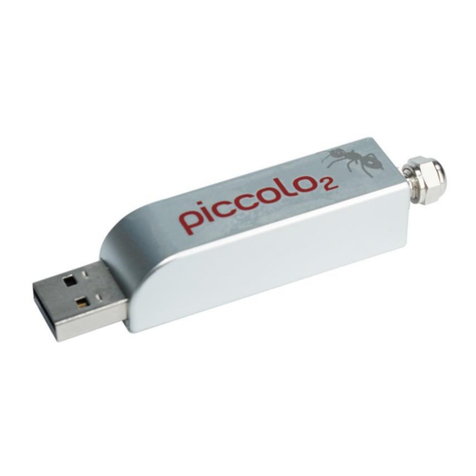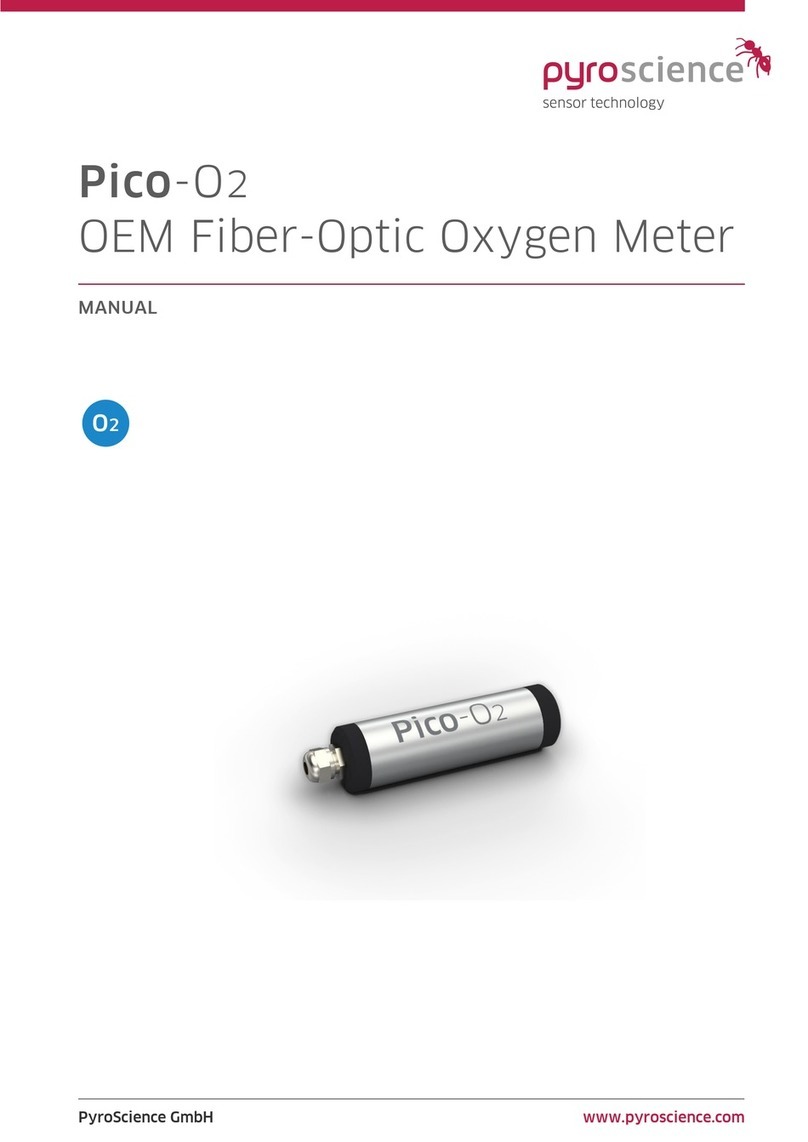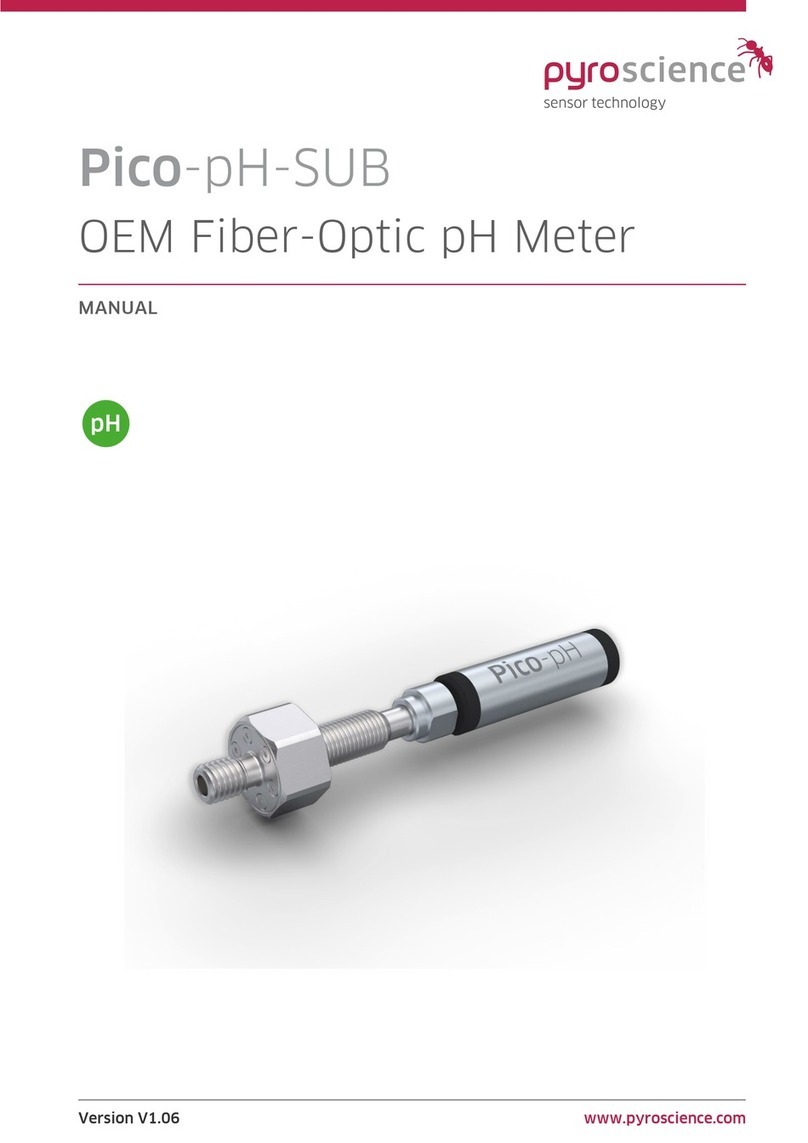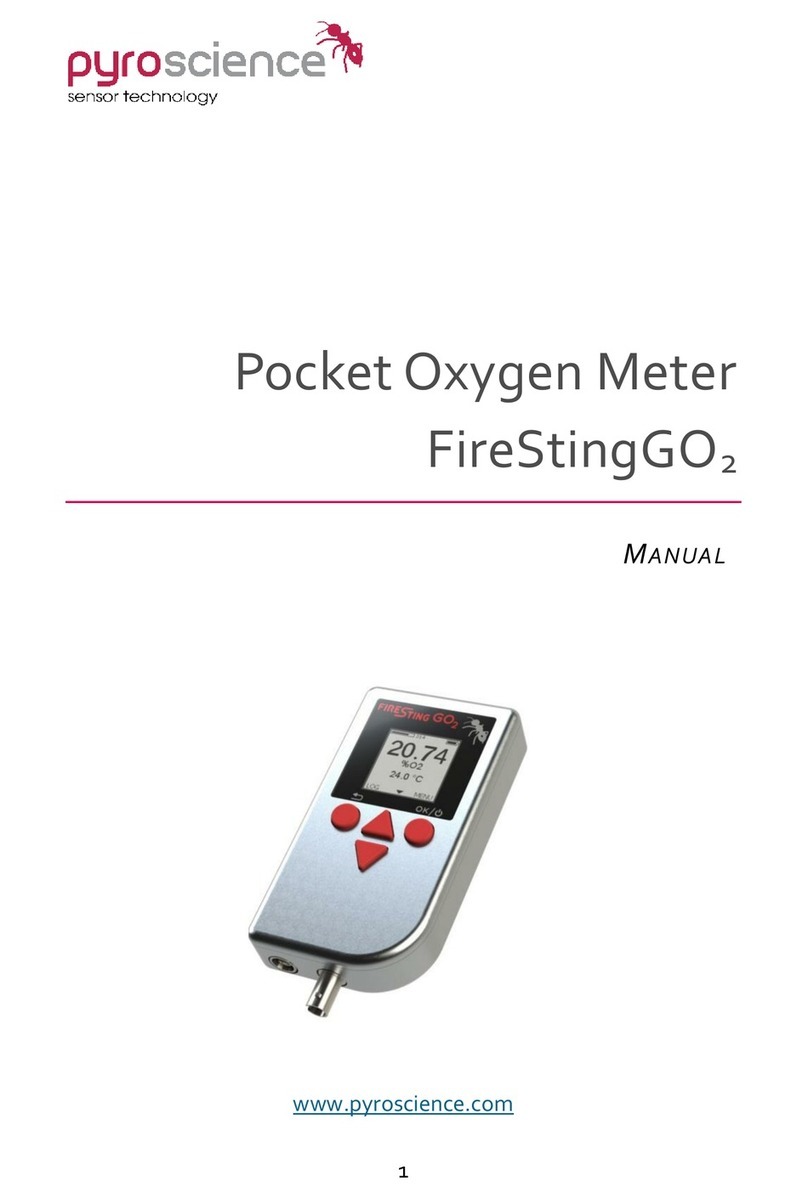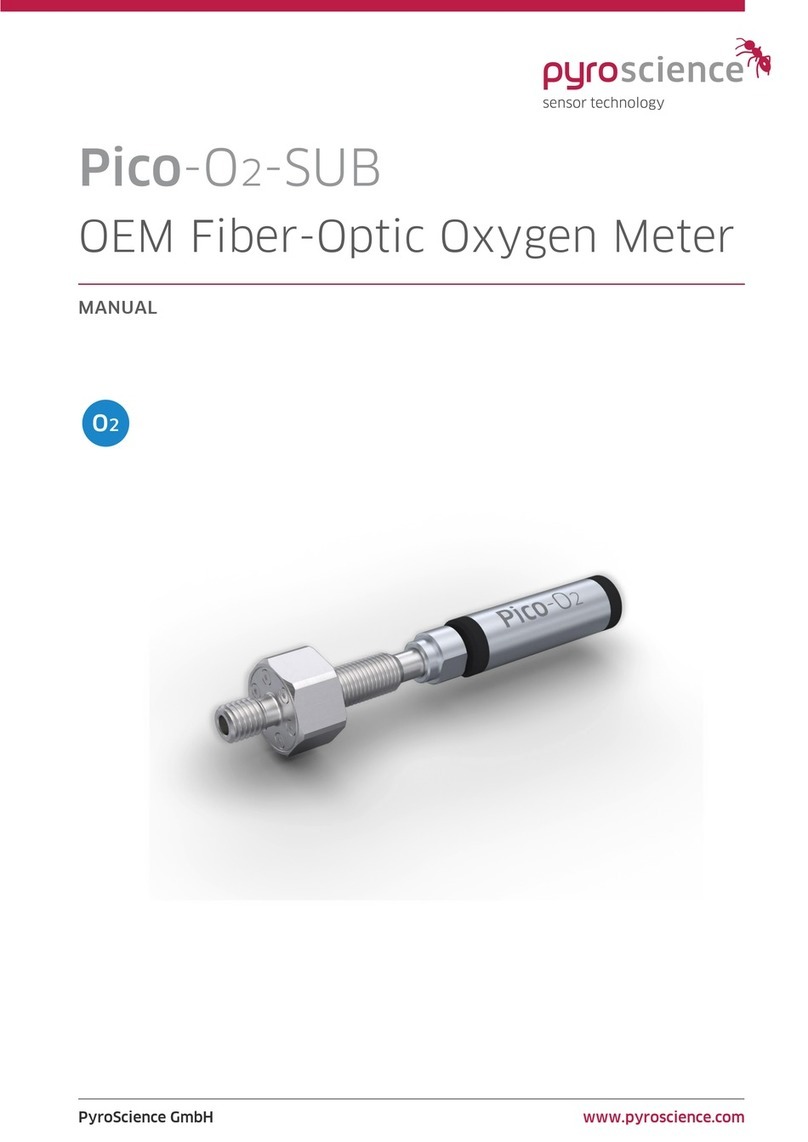AquapHOx® Logger | Manual
© PyroScience GmbH 3
TABLE OF CONTENT
1Introduction............................................................................................................................................... 4
2Overview.................................................................................................................................................... 5
2.1 Optical Port...................................................................................................................................... 5
2.2 Built-In Temperature Sensor ........................................................................................................... 5
2.3 Air Pressure Compensation............................................................................................................. 6
2.4 Included Accessories ....................................................................................................................... 6
2.5 Optional Accessories ....................................................................................................................... 7
3Software Installation.................................................................................................................................. 9
4Configuration........................................................................................................................................... 10
4.1 Connecting the Sensor Head ......................................................................................................... 10
4.2 Sensor Settings .............................................................................................................................. 11
4.3 Calibration Setup........................................................................................................................... 11
4.4 Calibration of Oxygen Sensors....................................................................................................... 11
4.5 Calibration of pH Sensors .............................................................................................................. 12
4.6 Calibration of Optical Temperature Sensors................................................................................. 12
5Measurements......................................................................................................................................... 14
5.1 Online Measurements................................................................................................................... 14
5.2 Data Logging.................................................................................................................................. 14
5.3 Charging the Battery...................................................................................................................... 15
5.4 Deployment................................................................................................................................... 15
5.5 Data Retrieval................................................................................................................................ 16
5.6 Compensation of pH Sensor Drift.................................................................................................. 17
6Appendix.................................................................................................................................................. 18
6.1 Dimensions.................................................................................................................................... 18
6.2 Device Specification....................................................................................................................... 18
6.3 Warnings & Safety Guidelines ....................................................................................................... 19
